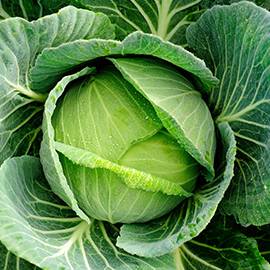- 150m Southwards, West DingWei Road, Nanlou Village, Changan Town, GaoCheng Area, Shijiazhuang, HeBei, China
- monica@foundryasia.com
Oct . 21, 2024 13:50 Back to list
Manufacturers of Cast Iron Bread Pans and Molds for Quality Baking Solutions
Exploring the World of Cast Iron Bread Pans and Molds Factories and Craftsmanship
Cast iron has been a staple in kitchens for centuries, revered for its durability, heat retention, and ability to improve with age. Among its many applications, cast iron bread pans and molds stand out for their ability to produce perfectly baked bread with a delightful crust and moist interior. The craftsmanship involved in the production of these beloved kitchen tools is a blend of traditional methods and modern innovations, primarily taking place in specialized factories around the globe.
The Heritage of Cast Iron Cookware
Cast iron cookware has a rich history that dates back to the Han Dynasty in China (206 BC – 220 AD), but it truly made its mark in Europe during the 18th century. The introduction of cast iron bread pans came with the rise of home baking, offering an efficient way for families to prepare bread. Unlike aluminum or non-stick pans, cast iron pans provide an even heat distribution, essential for achieving the perfect rise and texture in bread.
Manufacturing Processes From Molding to Finishing
The production of cast iron bread pans and molds involves several intricate steps. Factories specializing in these products typically begin with the selection of high-quality iron ore. The iron is melted in large furnaces, reaching temperatures of approximately 1,400 to 1,500 degrees Celsius. Once the molten iron is ready, it is poured into molds to form the desired shape.
Molding can be done using various techniques, including sand casting and wooden pattern casting. Sand casting is the most commonly used method and involves creating a mold from a mixture of sand and clay. The wooden patterns are made to the specifications of the bread pans, and once the sand mold is formed around the patterns, the molten iron is poured in. This process allows for the creation of intricate designs and ensures that each piece is unique.
After the cooling and solidification of the iron, the castings are removed from the molds. The next phase involves cleaning, which typically includes sandblasting or grinding to remove any rough edges and improve the finish. Factories then coat the pans with vegetable oil and bake them, creating a natural non-stick surface seasoned with the iron itself. This seasoning not only enhances the cooking properties but also protects the iron from rusting.
cast iron bread pans & molds factories

Quality Control and Craftsmanship
Producers of cast iron cookware place a high emphasis on quality control. Each pan is examined for any imperfections, ensuring that only the best products make it to market. Some factories retain artisanal techniques, which involve skilled artisans handcrafting each piece. These artisanal methods contribute to the character and authenticity of the pans, making them coveted items for cooking enthusiasts.
Sustainable Practices in Production
In recent years, there has been a growing awareness of sustainability within manufacturing practices. Many factories now emphasize eco-friendly methods, including the recycling of scrap iron and reducing waste. Furthermore, the longevity of cast iron cookware aligns perfectly with sustainable practices, as these pans can last a lifetime if properly cared for, reducing the need for replacements.
The Popularity Surge
The popularity of cast iron pans has surged in recent years, fueled by the rise of home baking and cooking shows highlighting traditional methods. Home bakers are increasingly turning to cast iron bread pans for their ability to achieve artisanal-style loaves. Moreover, the aesthetic appeal of seasoned cast iron, with its rustic charm, has made it a favorite among culinary enthusiasts and Instagram foodies alike.
Conclusion A Timeless Kitchen Essential
Cast iron bread pans and molds are more than just cooking implements; they are products of rich tradition and exquisite craftsmanship. As factories continue to innovate while preserving traditional methods, these pans serve as a bridge between the past and the present. Investing in a cast iron bread pan is not just about enhancing your baking game; it is also about embracing a piece of history that will last for generations. Whether you are a seasoned baker or a novice looking to explore the joys of bread making, a cast iron pan is a timeless addition to any kitchen.
-
Best Cast Iron Frying Pan for Induction Cooktop – Durable & Non-Stick Skillet Supplier
NewsJul.08,2025
-
Best Cast Iron Skillet Quality High Performance Cookware for Grill, Pizza, & Stir-Fry
NewsJul.08,2025
-
Premium Cast Iron Pan Set – Durable, Nonstick & Versatile Cookware for All Kitchens
NewsJul.08,2025
-
Blue Cast Iron Dutch Oven – Premium Enamel Cookware for Kitchen & Baking
NewsJul.07,2025
-
Best Enamel Dutch Oven for Bread - White Enamel Cast Iron Dutch Oven Service & Pricelist
NewsJul.07,2025
-
3.5 Qt Enameled Cast Iron Dutch Oven – Durable, Versatile & Stylish Cookware for Every Kitchen
NewsJul.07,2025